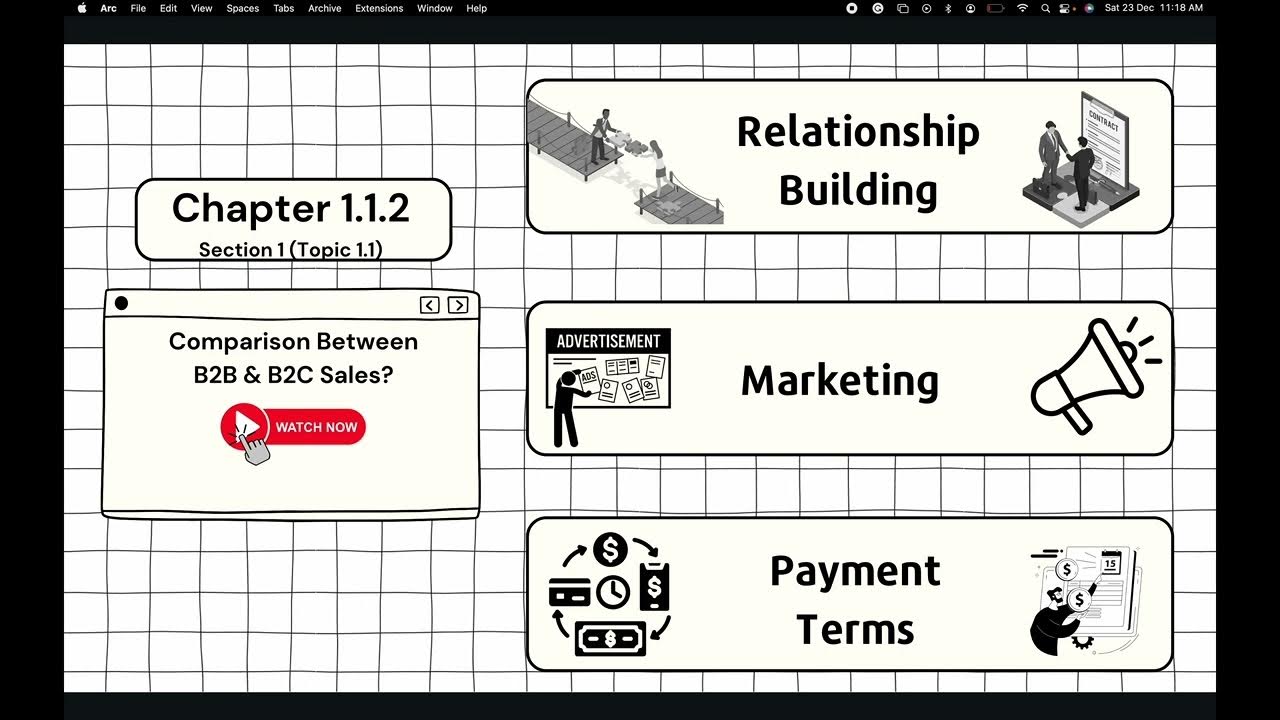Lec 01- Introduction to Business to Business Marketing
Summary
TLDRThe video discusses the significant growth of the B2B (business-to-business) market compared to the B2C (business-to-consumer) market over the past decade. With the B2B market projected to expand from $14.4 trillion to $23.1 trillion, it highlights an absolute growth of nearly $9 trillion, overshadowing the B2C sector. The speaker emphasizes the different nature of B2B transactions, often involving bulk purchases for organizational use, and notes the general public's limited awareness of B2B companies. Future discussions will further explore B2B market classifications and distinctions from B2C.
Takeaways
- 😀 Understanding B2B marketing is essential as it operates differently from B2C marketing.
- 📊 B2B markets are significantly larger than B2C markets, with a size ratio of 1.5 to 1.7 times greater.
- 🧩 Key characteristics of B2B transactions include rational decision-making and focus on product utility over branding.
- 🏭 The B2B supply chain involves various intermediaries and is crucial for the distribution of products to businesses.
- 🔍 Branding plays a vital role in B2B marketing, even though it may not be as visible to end consumers.
- 🔗 Products sold in B2B often serve multiple purposes, such as machinery used in the production of consumer goods.
- 💡 B2B companies often need to understand complex buyer behaviors and establish strong relationships with their clients.
- 📈 The growth of the B2B market has seen significant increases, with a jump from $14.4 trillion to $23.1 trillion over a decade.
- 🛠️ Different types of B2B products include industrial equipment, safety supplies, and office products, each serving distinct market needs.
- 🤔 Awareness of B2B companies is generally lower than that of B2C companies, despite their larger market size and impact.
Q & A
What are the projected growth figures for the B2C market over the next 10-12 years?
-The B2C market is projected to grow from $14.4 trillion to $23.1 trillion.
What is the absolute value increase in the B2C market over this period?
-The absolute increase in the B2C market is nearly $9 trillion.
How does the growth of the B2B market compare to the B2C market?
-The B2B market is significantly larger than the B2C market, with a growth ratio of approximately 1.5 to 1.7 times the size of the B2C market.
What economic event is mentioned in relation to the B2B market's growth?
-The transcript references the global recession that occurred around 2008-2010 as a significant economic event affecting market conditions.
Can you give examples of products that can be classified under both B2B and B2C markets?
-Examples include fans, drinking glasses, and mineral water bottles, which can be sold to consumers or purchased in bulk by organizations for events.
Why is the B2B market's value higher than that of the B2C market?
-The B2B market typically involves larger transactions and bulk purchases, leading to higher overall sales figures compared to the B2C market.
What is a key reason for the lack of awareness about B2B companies among the general public?
-Many people are less aware of B2B companies because they do not interact with them directly as consumers, unlike B2C companies.
What will be covered in the next lecture according to the transcript?
-The next lecture will cover the classification of the B2B market and discuss the differences between B2B and B2C markets.
How does the lecturer view the importance of understanding B2B markets?
-The lecturer emphasizes that understanding B2B markets is crucial, especially for professionals involved in these sectors, due to their significant economic role.
What is the significance of the ratio mentioned for B2B versus B2C markets?
-The ratio of 1.5 to 1.7 indicates that the B2B market is not only larger in absolute terms but also emphasizes the importance of B2B transactions in the economy.
Outlines

This section is available to paid users only. Please upgrade to access this part.
Upgrade NowMindmap

This section is available to paid users only. Please upgrade to access this part.
Upgrade NowKeywords

This section is available to paid users only. Please upgrade to access this part.
Upgrade NowHighlights

This section is available to paid users only. Please upgrade to access this part.
Upgrade NowTranscripts

This section is available to paid users only. Please upgrade to access this part.
Upgrade Now5.0 / 5 (0 votes)





